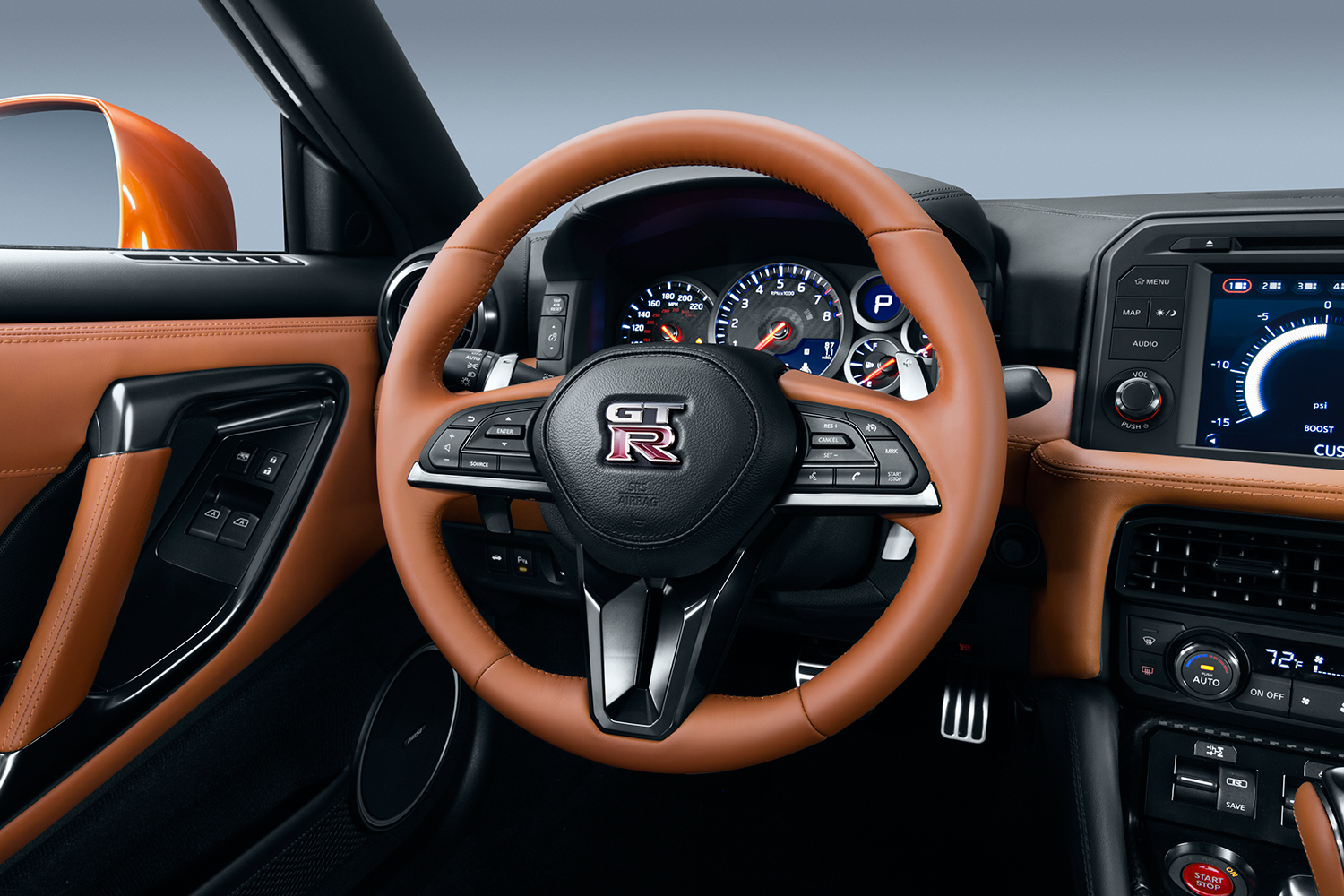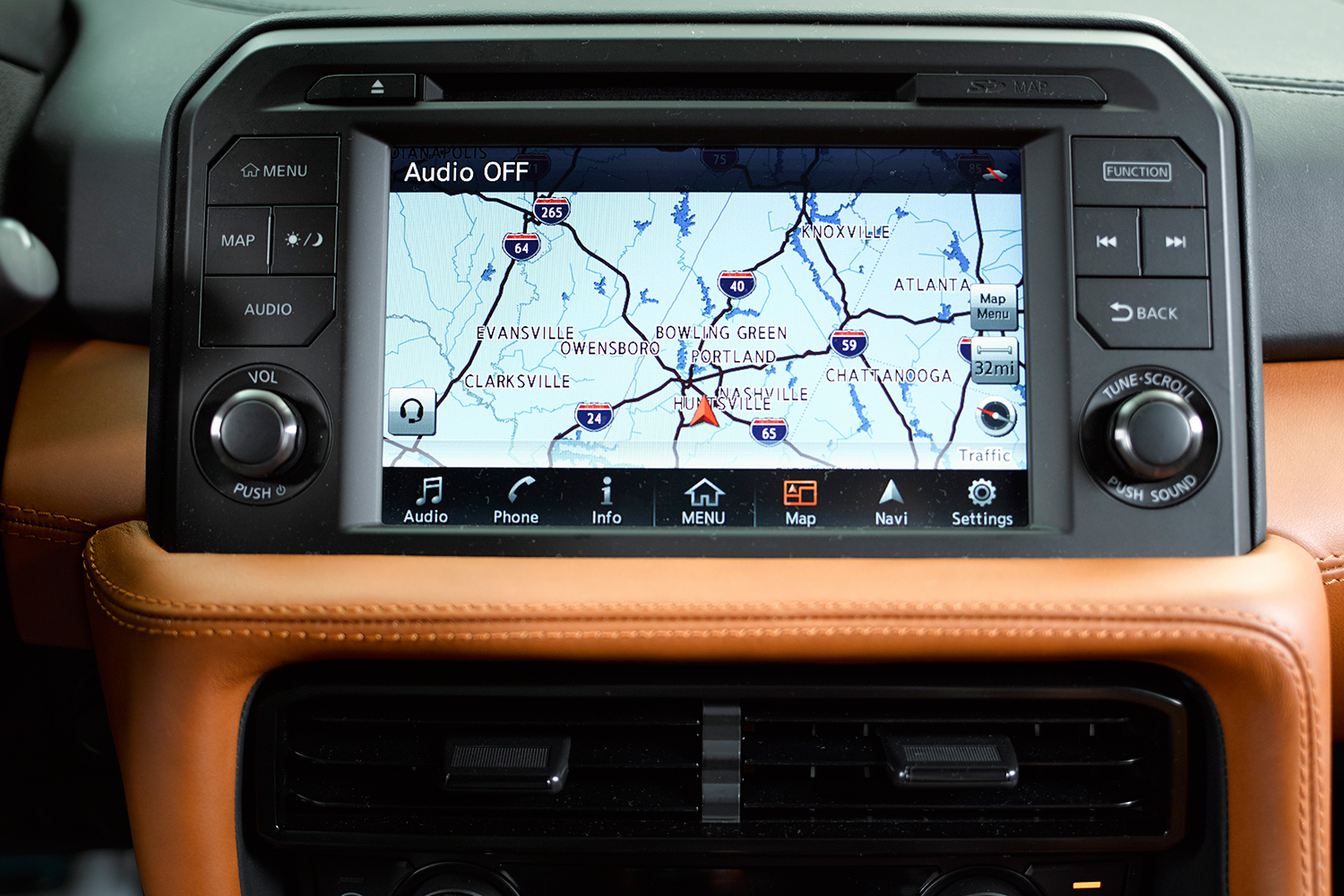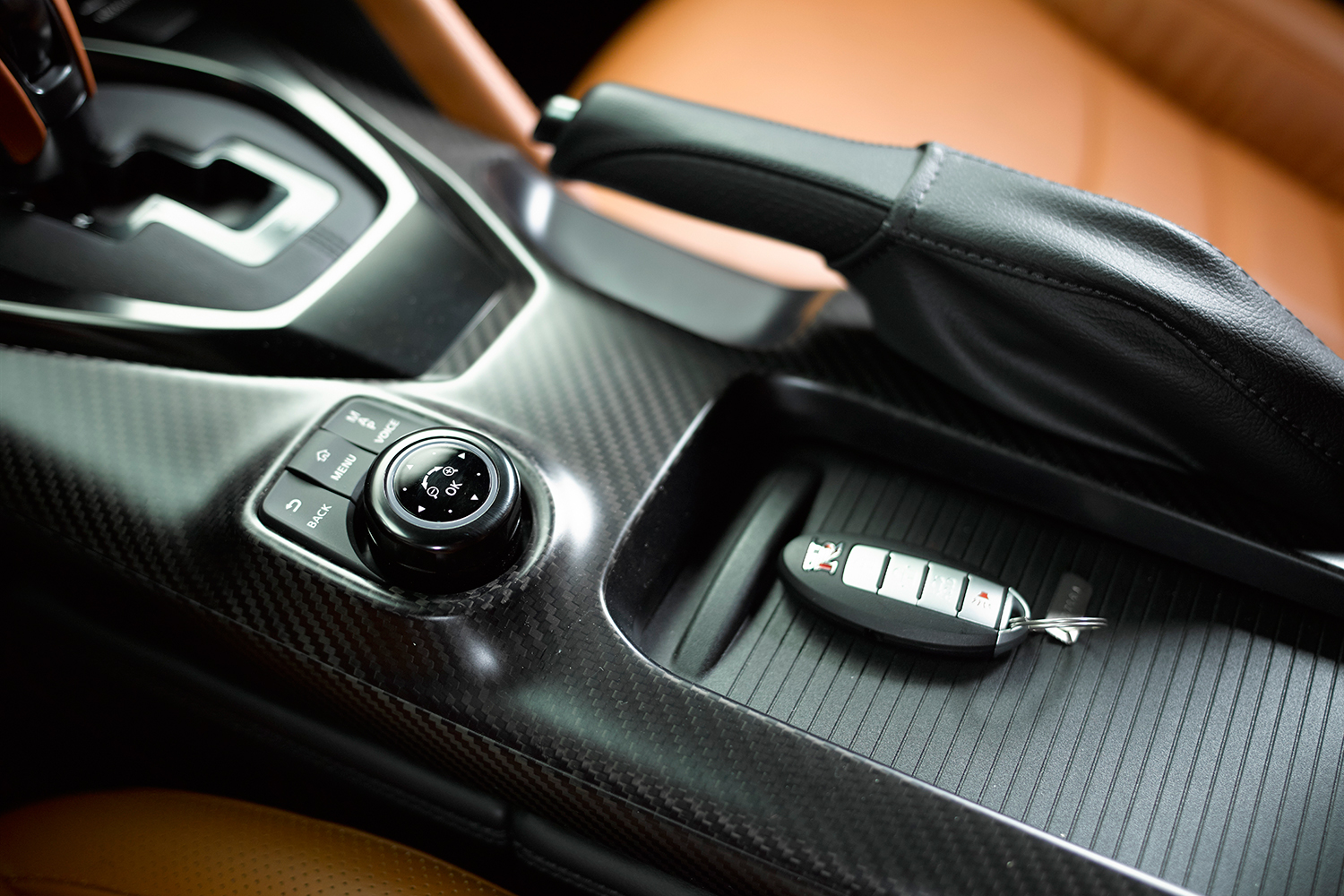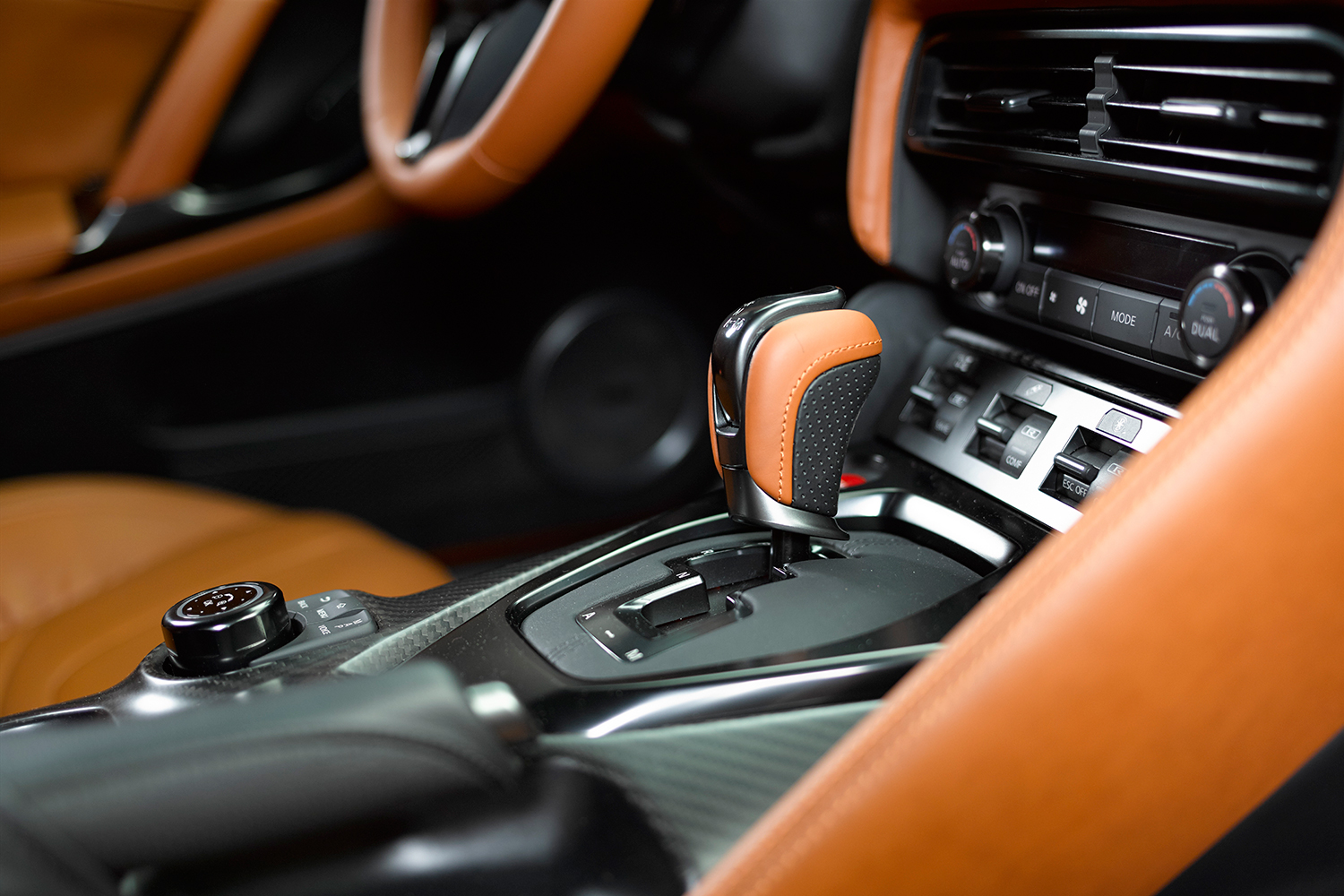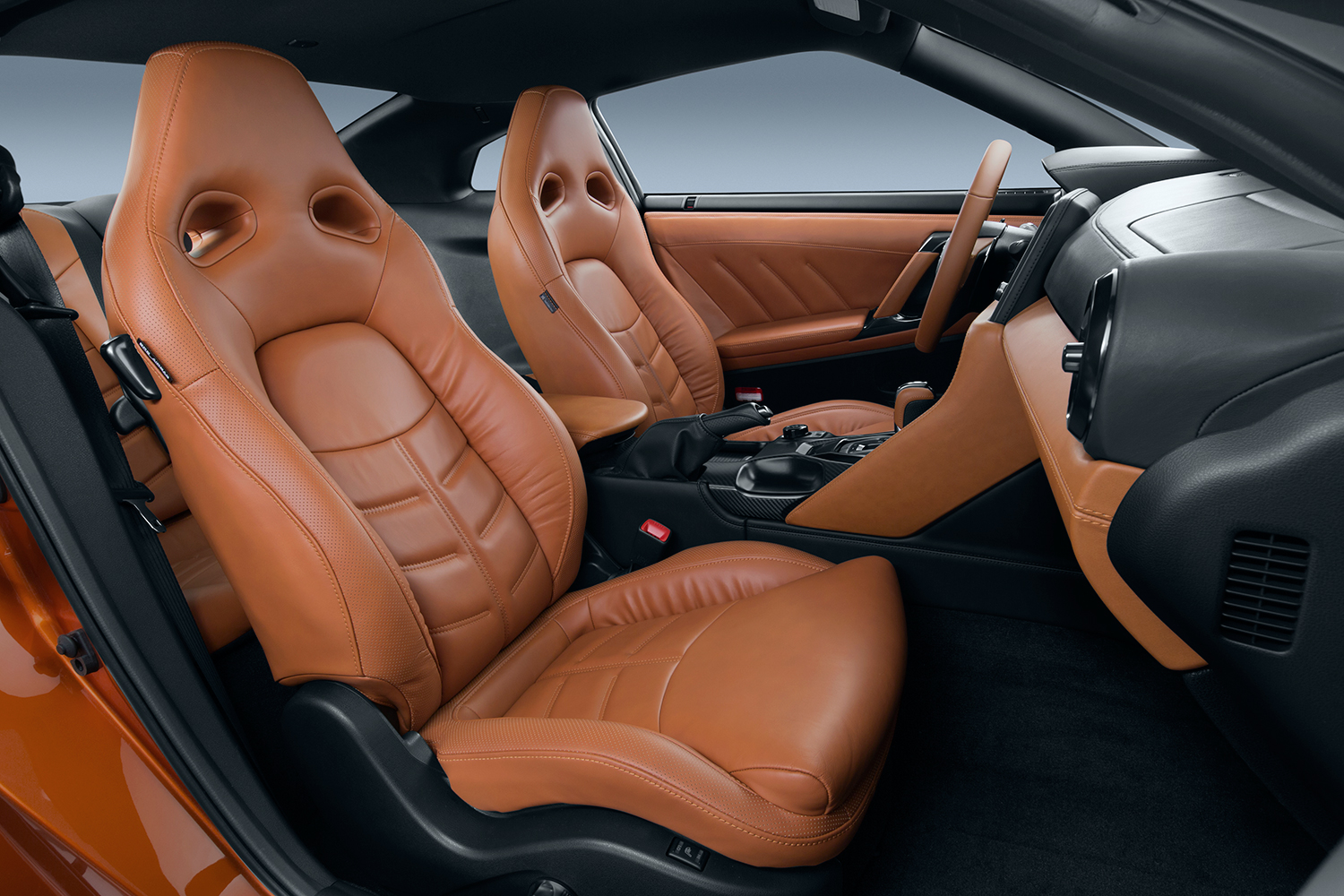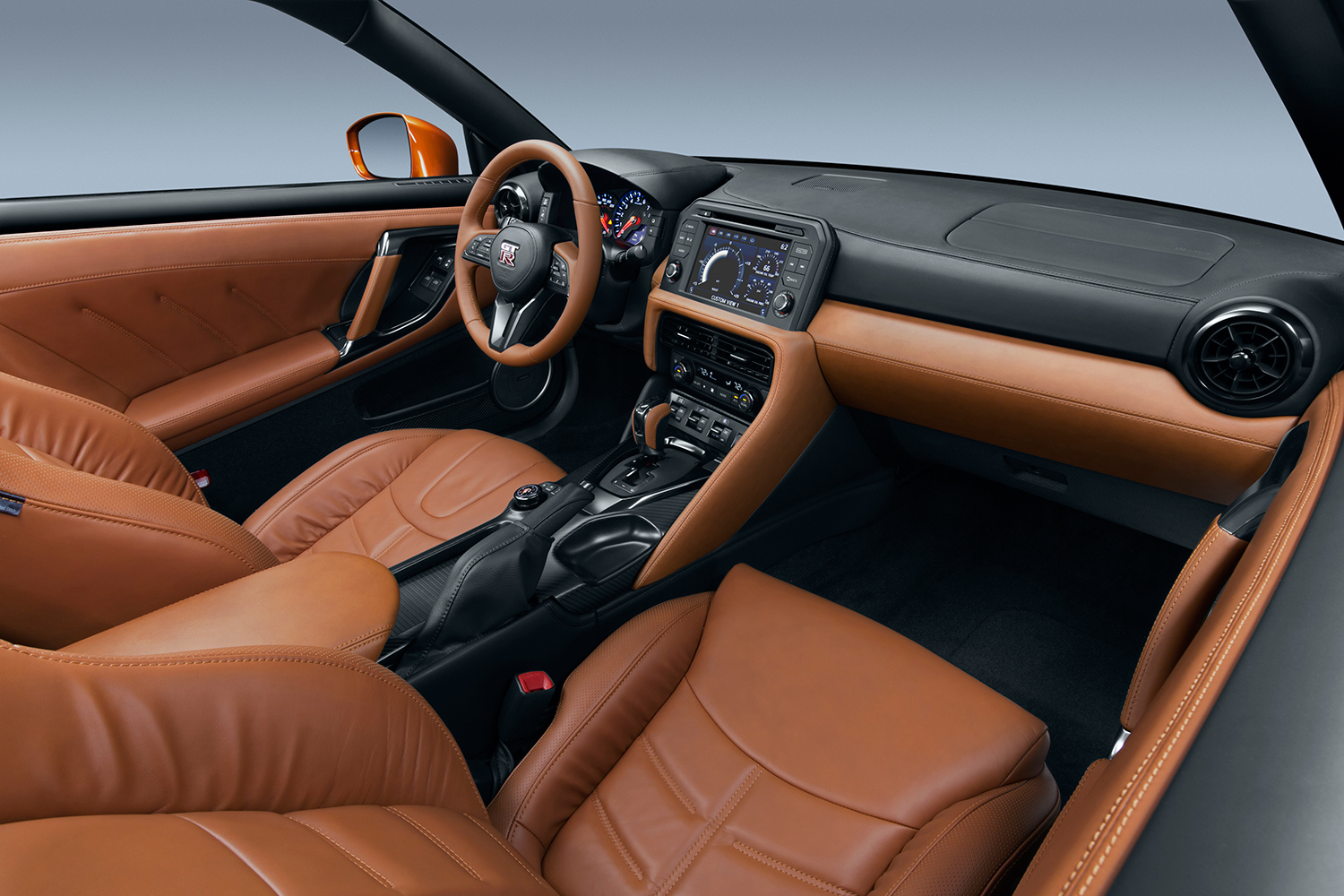The Nissan GT-R as we know it has been on sale for almost a decade now, but it’s still eating Porsches for lunch. A new GT-R is on the horizon, but Nissan still thinks there’s some potential to squeeze out of the current R35 model.
The 2017 Nissan GT-R debuts this week at the 2016 New York Auto Show with numerous updates. Nissan was continually tweaked the GT-R over the years, but it says this overhaul is the most significant one since the R35 generation was introduced in 2007. Will it be enough to keep the GT-R’s rivals at bay?
Much of the GT-R’s shape is dictated by aerodynamics, so it’s remained essentially unchanged. For 2017, Nissan did make some revisions, including a new grille that incorporates the company “V-motion” shape, a new hood, front bumpers, and front lip spoiler. The side skirts were also pushed further out from the bodywork, and that the back, there’s a slightly reshaped rear fascia that retains the GT-R’s trademark round taillights and quad exhaust.
Under that new hood, the GT-R is still powered by a 3.8-liter twin-turbocharged V6 hand-assembled by craftspeople called Takumi. The engine now makes 565 horsepower and 467 pound-feet of torque, increasing of 20 hp and 4 lb-ft. That power goes to all four wheels through a six-speed dual-clutch transmission. The 2017 GT-R gets a new titanium exhaust system and (groan) the Active Sound Enhancement system from the 370Z and Maxima, which plays fake engine noises through the sound system.
That bit of audio trickery is a result of Nissan’s attempt to make the GT-R more refined and luxurious. The new model is a bit quieter before, says Nissan, thanks to an acoustic glass windshield and added sound-deadening materials. When Active Sound Enhancement isn’t adding some of that noise back, Active Noise Cancellation is using speakers to project sound waves that negate offending tones.
In addition to being quieter than before, the cabin is significantly redesigned. Again showing the focus on luxury, the new dashboard is wrapped in a single piece of hand-selected Nappa leather. Nissan is also following the trend toward horizontal dashboard layouts, minimizing the center stack to create an airier feel in the cockpit. Shift paddles for the dual-clutch gearbox are mounted to a new steering wheel.
The redesigned dashboard contains a new 8.0-inch touchscreen which does more work than the previous 7.0-inch screen. Nissan says it reduced the number of analog controls from 27 in the previous version to 11 in the 2017 model. The NissanConnect mobile app suite will also be available in “select markets,” along with a smartphone app that allows remote control of things like door locks and the car alarm.
The 2017 Nissan GT-R goes on sale this summer, but all eyes are looking ahead to an all-new GT-R that will mark the model’s first complete redesign since 2007. That car is still likely a few years away though, and in the meantime Nissan will try to get as much mileage out of the current GT-R as it can.

